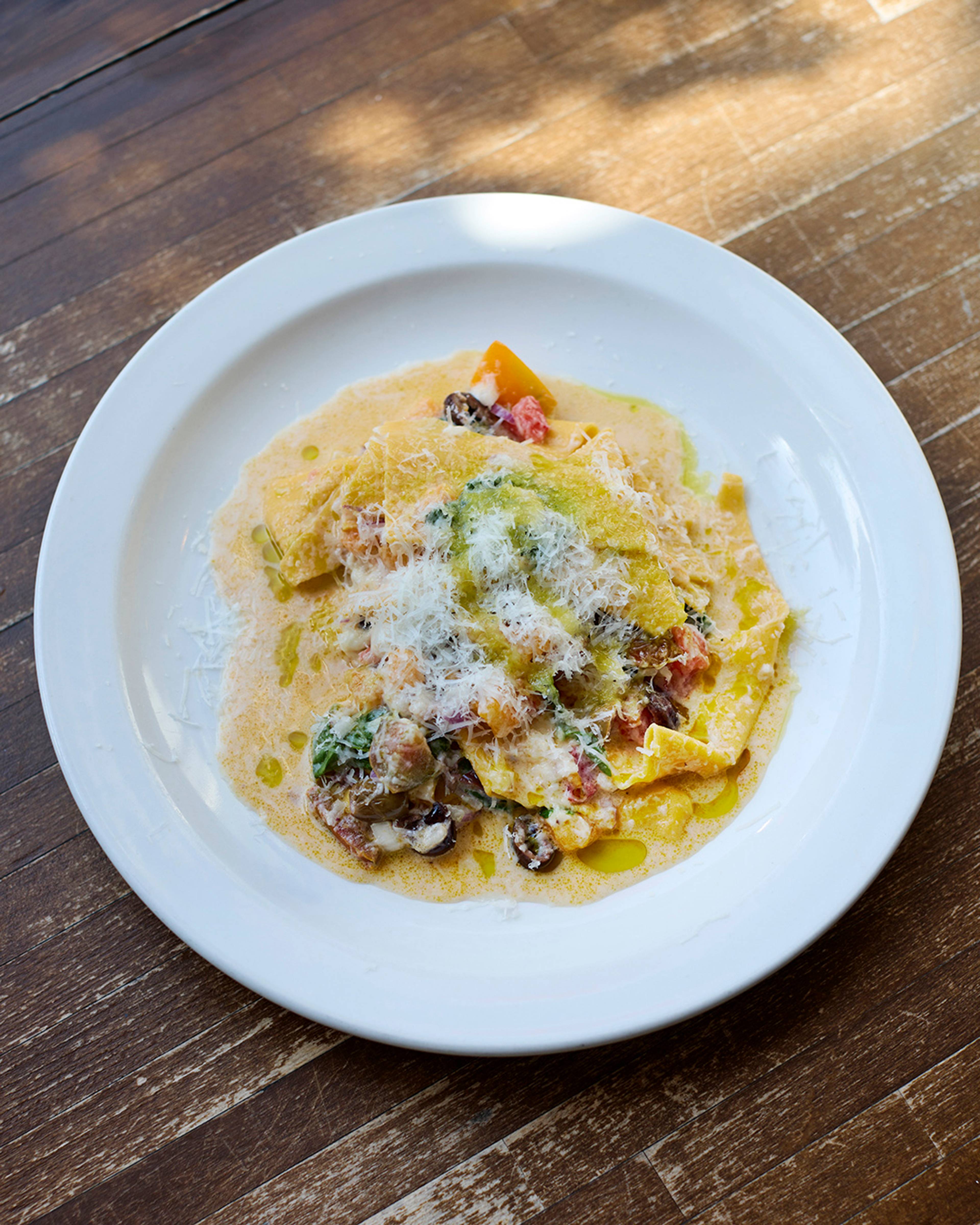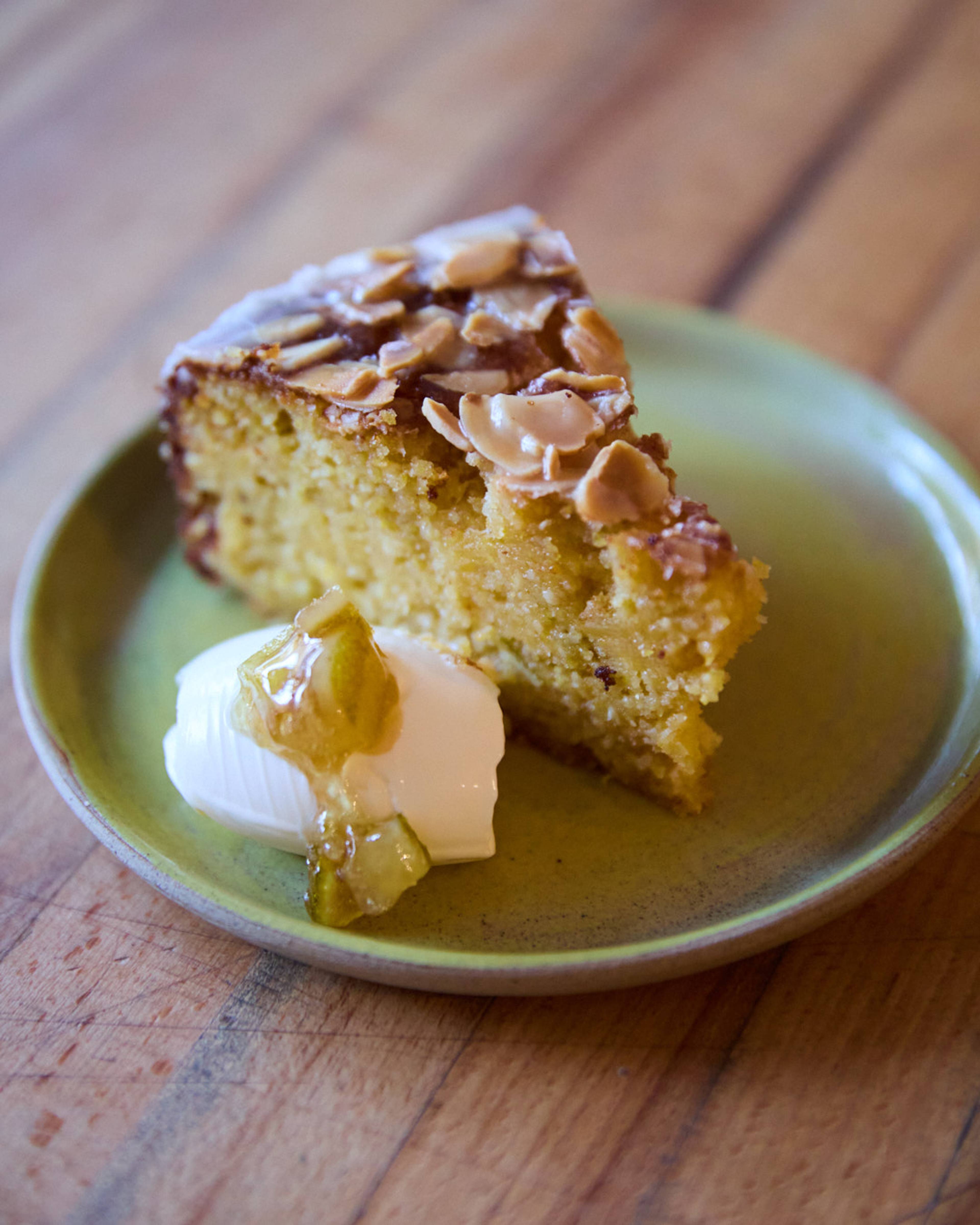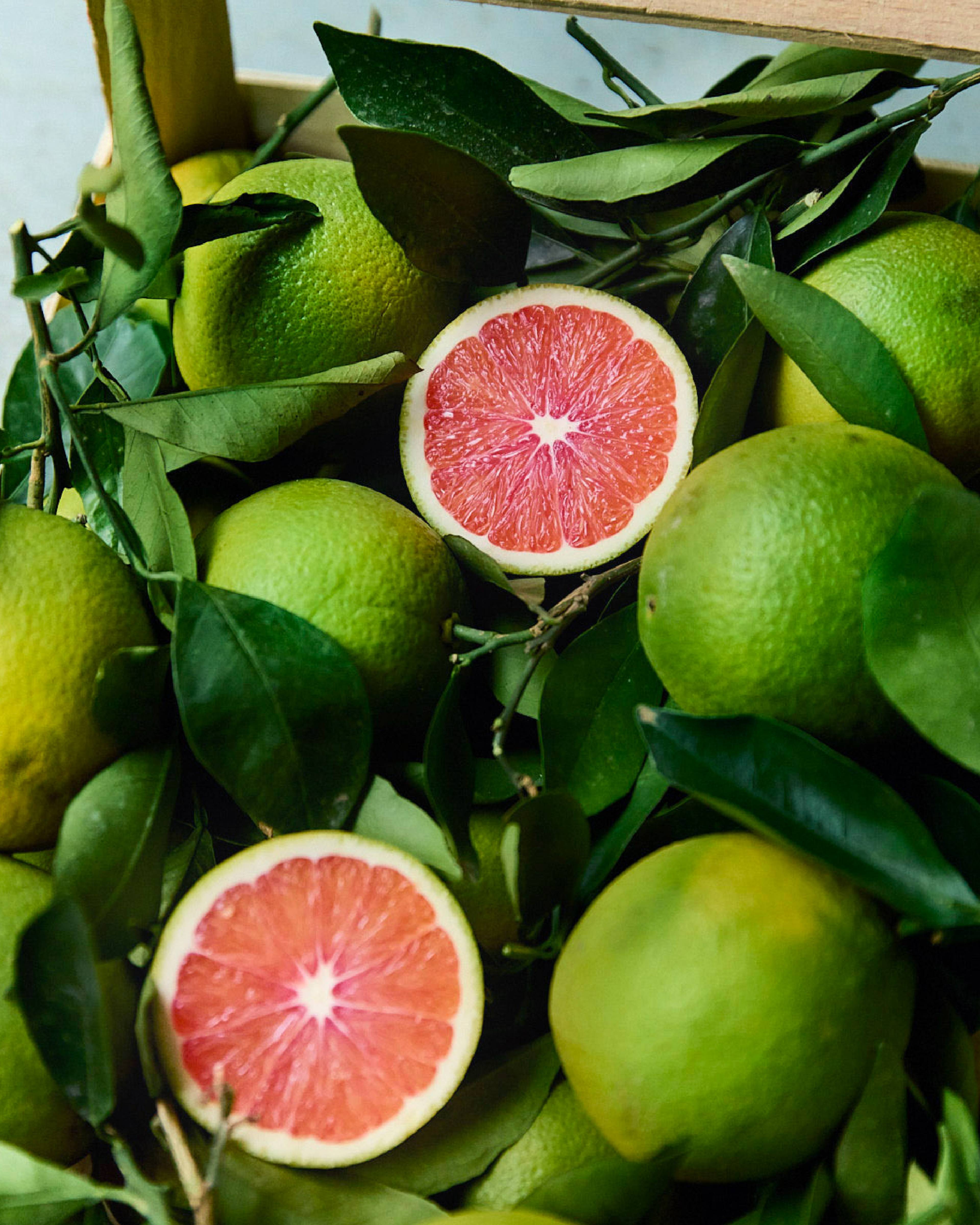Fresh pasta, Heirloom Tomatoes, Raw Onion, Burrata and Basil WITH Mike Davies

This recipe is a nostalgic favourite from Mike Davies, founder of The Camberwell Arms, and now author of the cookbook Cooking for People – centred on seasonal recipes to remove the stress from hosting and menu planning.
Inspired by his mum’s cooking, this dish – Fresh pasta, Heirloom Tomatoes, Raw Onion, Burrata and Basil – has been firmly imprinted on Mike’s mind from an early age, and this version is only slightly changed, elevated just a little by his deeper understanding of ingredients and process, and access to better produce.
Here, raw onions are tempered, making for a crunchy, sharp contrast with umami-rich heirloom tomatoes, alongside briny olives and fresh curds from the burrata, and as it comes together as a sauce, it all clings to delicate sheets of fresh pasta. This is a quick, simple, and crowd-pleasing meal that makes an excellent showcase for heirloom tomatoes.
Fresh pasta, Heirloom Tomatoes, Raw Onion, Burrata and Basil
INGREDIENTS
For the fresh pasta
200g ‘00’ flour
3 egg yolks
1 whole egg
Semolina, for dusting
To finish
400g very good Heirloom Tomatoes, cut into 1cm (½in) pieces
1 Tropea onion, finely diced
100g pitted black olives, roughly chopped
2 balls of burrata, roughly chopped
1 bunch of asil, leaves picked and torn
4 tbsp Senia Olive Oil, plus more to taste
Parmesan or pecorino, to serve
Salt and pepper

METHOD
For the fresh pasta
Put the flour in a mixing bowl and make a well in the centre. Add the yolks and whole egg and start to mix the flour into the eggs using a fork. Use your hands to bring it together, then transfer to a clean work surface.
Knead the dough by stretching and folding it over itself for 10 minutes, or until it looks smooth and has a little spring in it. Alternatively, you can use a stand mixer with the dough hook attached. Wrap the dough in cling film and put it in the fridge to rest for a minimum of two hours. You can make the dough a day in advance if it’s easier.
To roll the pasta, take the dough out of the fridge and unwrap it. Dust your work surface with semolina and use a rolling pin or the palm of your hand to flatten the dough to the width of your machine. The shape doesn’t really matter at this point, but if the dough feels a little wet, be sure to use plenty of semolina to keep it from sticking.
Set the pasta machine to the thickest setting and roll the dough through it. Turn the setting down one increment at a time, rolling the dough through at each thickness, down to setting 7. Fold the dough in from the ends to a width that will fit through the machine, turn it 90 degrees, then run it back through the machine at the highest setting, once again rolling the dough through at each thickness, this time down to setting 5. Fold the dough again and turn it 90 degrees before passing it through all the settings for a final time, finishing at setting 1.
Each run through the machine develops the strength of the pasta, creating a pleasingly firm
texture that will hold onto the sauce.
Dust each side of the pasta sheet with semolina and, using a knife or pasta cutter, cut the pasta into rectangles the size of lasagne sheets, then cut diagonally down from corner to corner to make large triangles.
Sprinkle a generous amount of semolina in a tray and lift the pasta pieces into it, coating each piece. If you’re not using the pasta on the day you make it, I recommend freezing it immediately. It will keep until you need it and cook perfectly well from frozen.
To finish
Bring a pan of water to the boil and salt it generously. Cook the pasta in the boiling water for a couple of minutes if fresh, and following the packet’s recommendation if dried. Mix all of the ingredients apart from the Parmesan in a large bowl and lightly season with
salt and pepper.
Lift the pasta out of the water and straight into the bowl. Add a ladleful of pasta water and start tossing the bowl as if you are dressing a salad. Use a wooden spoon at the same time to agitate the pasta and help the starch to develop and thicken the sauce. The pasta water will meld with the juices from the tomatoes, and the heat from the pasta will start to melt the burrata and cook the ingredients. It is ready when it looks glossy.
Serve immediately and grate Parmesan over the pasta at the table.
Stories
See allWe exist to fix the food system.
People are more cut off from the origins of their food than ever. This makes flavour, nutrition and farming practices that protect the planet, almost impossible to find.
By working directly with growers, we create a more sustainable way forward for farming. By giving everyone the tools to understand the power of our food choices, we empower everybody to become drivers of change.
Now is the time for action. Join the food system revolution.

Go beyond four seasons
Each fruit and vegetable has its own season, with subtle shifts which happen every day. Follow their microseasons to unlock flavour at every stage.
WHAT’S IN SEASON?

Know where your food comes from
We know the name of the people behind everything we source. Recognise their growing artistry to find out exactly where your food comes from (and why that matters).
MEET THE GROWERS

Make your diet diverse
Our growers work with varieties chosen for quality and nutrition, not yield. By selecting their crops you keep heritage seeds in play, add to ecosystem biodiversity and preserve unique flavours.
PEAK SEASON BOX
United Kingdom
© 2026 Natoora Ltd.





